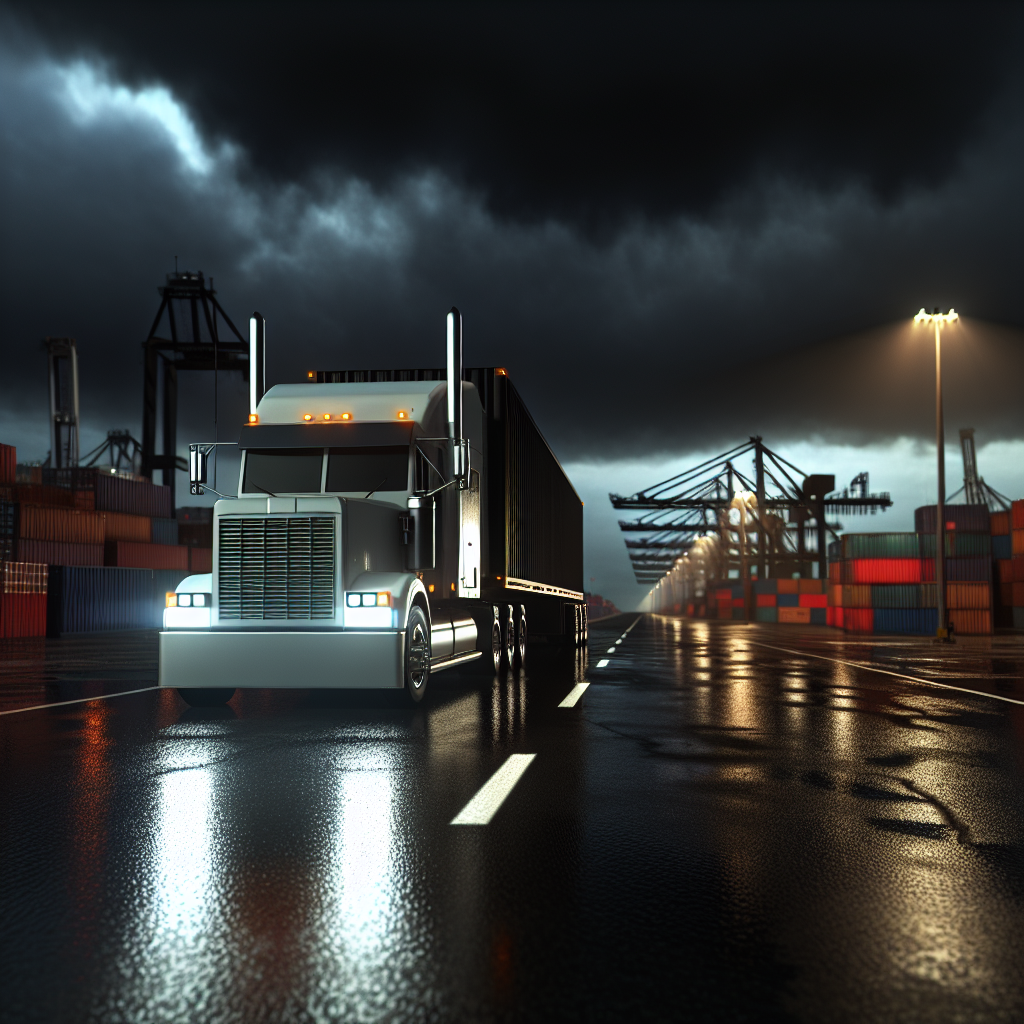Ports and rail ramps may be running smoothly, but trucking is where the squeeze will be felt. That’s the takeaway from ITS Logistics’ latest read of U.S. gateways, highlighted by FreightWaves: with import volumes slipping, terminals have time on their side while drayage and inland carriers contend with softer demand, tighter fee scrutiny and a changing regulatory backdrop. The surface calm masks risks that accumulate downstream in trucking’s margins, networks and capacity planning. ([]())
Two policy moves in the past three days add fresh pressure. First, the United States today activated new port fees on vessels built, owned or operated by Chinese entities — and Beijing reciprocated — raising the odds of last‑minute service changes, longer routings and schedule blips that can cascade into missed appointments and detention for truckers. Even if ocean carriers absorb some charges, the volatility tends to land on drayage first: shifting vessel calls and bunching arrivals can swing day-to-day truck needs and yard fluidity.
Second, Washington adjusted the fee framework over the weekend, easing some penalties while toughening others. That tinkering underscores how fluid the rules are right now, which makes it harder for motor carriers to forecast near-term volume and staffing around port calls. Expect a few weeks of network experimentation by carriers as they rebalance fleets to minimize new costs — and a knock-on effect for local dray, chassis turns and rail ramp pulls.
Inside the gates, ITS’ October index — reported by FreightWaves — points to lower import volumes and a crackdown on non‑domiciled CDLs as “storm clouds” for trucking even while terminals avoid congestion. That combination typically flattens dray demand, pushes more accessorial oversight onto carriers and heightens credit risk as thinly capitalized operators face higher compliance costs. For shippers, the near-term benefit (smoother ports) can be offset by midterm fragility if capacity exits. ([]())
There are already signs of financial stress. A Los Angeles–area drayage carrier, Legacy Drayage Inc., has an active Chapter 11 case with new docket activity filed on October 12 — a small but telling data point in a market where port‑dependent fleets have been whipsawed by frontloading, tariffs and now fee uncertainty. Vetting partners’ financial health before Q4 bid cycles and 2026 RFPs — a core ITS recommendation — isn’t theoretical anymore.
Capacity could also tighten away from the coasts as the import pullback ripples inland. A Monday industry roundup noted fewer port-origin loads are creating mismatches in inland markets, nudging up spot pricing on specific lanes (for example, Las Vegas–Los Angeles and Stockton–Los Angeles) as shippers hunt for backhaul capacity. That pattern — leaner headhaul flows and choppier backhaul economics — is consistent with a late‑season slowdown in boxes but steady domestic demand. Plan on shorter tender lead times where coastal inflows have cooled.
One operational reprieve: the Federal Motor Carrier Safety Administration re‑issued a waiver effective October 13 through January 10 that lets fleets rely on paper medical certificates for up to 60 days while states and examiners finish the National Registry II integration. That should reduce avoidable out‑of‑service surprises at weigh stations and ports — particularly valuable for drayage and regional networks that cycle drivers through compliance checks frequently.
What it means for trucking leaders: watch for ocean schedule reshuffles and service strings adjusting to the new U.S.–China port fee regime; protect drayage throughput with flexible appointment blocks and overflow yard options; audit detention/demurrage exposure as terminals intensify accessorial oversight; tighten counterparty risk screening on port‑centric carriers; and adjust pricing and routing guides in inland nodes where backhaul scarcity is lifting spot rates. The ports may look calm — but the pressure is migrating to the road.
Sources: FreightWaves, Reuters, Commercial Carrier Journal, Inforuptcy, J.M. Rodgers Co.
This article was prepared exclusively for TruckStopInsider.com. Republishing is permitted only with proper credit and a link back to the original source.





